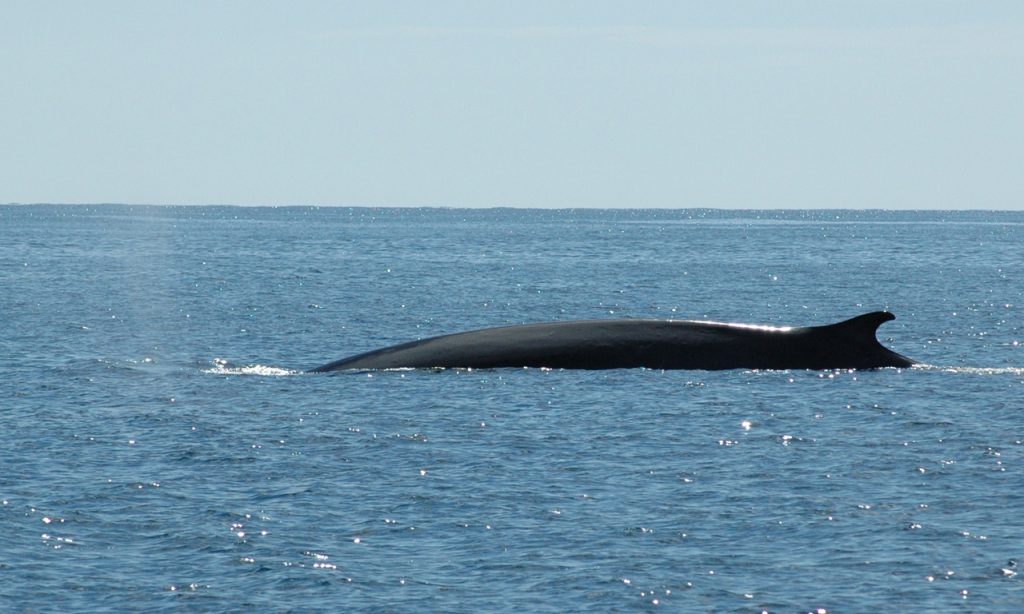Medieval Whaling Account from Ireland? June 19, 2016
Author: Beach Combing | in : Medieval , trackback
Beach was very excited to find this reference yesterday from the works of al-`Udhri an eleventh-century Arab writer in Spain (thanks to Caitlin Green). Al-‘Uhdri was quoted by another author (al-Qazwini) in the thirteenth-century. This passage allegedly shows a glimpse of Ireland through Arab eyes.
The Norsemen have no capital in all the world save this island. Its circumference is a thousand miles. Its people have the customs and dress of the Norse-men. They wear rich mantles, one of which is worth 100 dinars. Their nobles wear mantles ornamented with pearls. He related that on their coasts they hunt the young of the whale (ablanah), which is an exceeding great fish. They hunt its calves, regarding them as a delicacy. They have mentioned that these calves are born in the month of September, and are hunted in the four months October to January. After this their flesh is hard and no longer good for eating. As to the manner of hunting them, al-`Udhri mentioned that the hunters assemble in ships, having with them a great iron blade with sharp spikes. In the blade is a great strong ring, and in the ring a strong cable. When they find a calf, they clap their hands and shout. The calf is delighted by the clapping and approaches the ships, wanting to be friendly with them. A sailor specially appointed for the task rubs the calf’s forehead briskly, and the calf finds pleasure therein. Then he places the blade in the middle of its head and, taking a powerful iron mallet, he strikes with it upon the blade with all his force three times. It does not feel the first blow, but at the second and third it struggles violently. Sometimes it hits part of the ships with its tail, and destroys them. It does not cease struggling till weariness overtakes it. Then the crews of the ships take turns to drag it, till it is brought to the shore. Sometimes the mother of tile whale-calf sees the struggle and follows them. They prepare much powdered garlic, which they scatter on the water. When the whale smells the garlic, she lets [the calf] go, and turns backwards in her tracks. Then they cut up the meat of the calf and salt it. Its meat is white like snow, and its skin black as ink.
This whale hunt does not sound particularly factual: ‘The account here reads almost as if it were some whale-boat-man’s humorous version of how to catch a whale’ (Dunlop). More interesting, though, is the location. Apparently the word ‘Irlandah’ is used to describe the island. That word is used elsewhere for Ireland in medieval Arabic sources. But there must be the suspicion that this is actually Iceland or perhaps even Denmark or Scandinavia (‘islands’ were not always islands in medieval geographies). By no stretch of the imagination could Ireland be described as the ‘capital’ of the Norse world, in the eleventh century: there were several impressive Norse settlements on the coast. But then was there any ‘capital’ in the Norse world. Ireland is not, of course, a thousand miles in circumference, it is four or five times as big: though that kind of a measurement hardly seems worth taking too seriously. Dunlop, in an essay, on Arab historians and Britain and Ireland derides the idea that this could be Iceland saying that that place ‘would appear to be effectively out of the range of Muslim geographers (and sailors presumably)’: but, of course, this is not an eyewitness account. All we need is a European sailor and an Arab writer meeting in an opium den somewhere in Iberia for this to work (in fact, given some features of this account, the opium lefts its mark). Dunlop also points out that the word for whale here ablanah comes from a Romance language and that this rules out Iceland; though how it could be taken to suggest Gaelic Ireland is a mystery. It simply suggests a pre-established word or a Romance-speaking story-teller.
Any other thoughts on the location for this remarkable account: drbeachcombing AT yahoo DOT com
Dunlop, The British Isles According To Medieval Arabic Authors, The Islamic Quarterly, London (1957)
Bruce T, 30 Jun 2016, What about the Isle of Man? The Outer Hebrides, the Shetlands, and the Orkneys in various groupings could be his Irlandh, too. Whale watchers on the west coast of the USA and Hawaii often have whales approach the boat wanting their heads rubbed, occasionally with accidental deaths of the eco-tourists who pay to go out on these cruises. As this behavior is often speculated as the result of juvenile whales mistaking small sailing craft for others of their species on the surface, why wouldn’t whalers in small boats have taken advantage of this fact to make easy pickings of juvenile whales. The spike story seems to be valid, but it normally takes place at the end of the hunt, after the animal has worn itself out towing the various boats that have harpooned it and is very dangerous. The death throws of a multi-ton animal can crush men and boats. The garlic aspect strikes me as common superstition, repelling the mother the way you would a witch. I’ve run across many a home concocted fish bait over the years, fresh and salt water, and garlic is used in the majority as a fish attractant.


